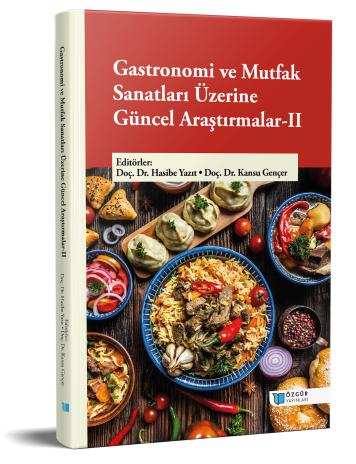
Gastro Diplomasi ve Uygulamaları
Şu kitabın bölümü:
Yazıt,
H.
&
Gençer,
K.
(eds.)
2024.
Gastronomi ve Mutfak Sanatları Üzerine Güncel Araştırmalar- II.
Özet
Yemek, insanlığın yaşamını sürdürebilmesi için gereksinim duyduğu en acil ve temel ihtiyaçtır. Yemek, sadece bir tüketim unsuru olarak görülmemektedir. Tüketim olgusu üzerinde küreselleşmenin baskın bir rol oynamasıyla birlikte devletlerin politika üretim süreci de etkilenmiştir. Kültürel etki gıdaların üretimi, tüketimi, dağıtım organizasyonuna (Beşirli, 2021) ek olarak çağdaş düzenin getirileriyle uyum sağlama çalışmaları temelinde pazarlama ve tanıtım üzerinde de rol oynamıştır. Bu bağlamda ilk olarak kamu diplomasisi ve kültürel diplomasi kavramalarından faydalanılmıştır. Diplomasi, temek tanımıyla insani ilişkilerin barışçıl yollarla geliştirilmesidir. Ülkelerin zaman içerisinde mutfak kültürlerini diplomatik bir iletişim aracı olarak kullanabilecek güce sahip olduğunun keşfedilmesiyle birlikte ise gasto diplomasi kavramı da güç kazanmıştır. Gastro diplomasi ise Paul Rockower’ ın tanımıyla “mideler aracılığıyla, kalpleri ve zihinleri kazanma eylemidir” biçiminde tanımlanmaktadır. Son yıllarda birçok ülke mutfak kültürü temelinde uluslararası imaj yaratma çabasına girmiş ve bunu gastro diplomasi aracılığıyla gerçekleştirmiştir. Yenidünya düzeninin beklentileri neticesinde gastro diplomasi uygulamaları yumuşak güç kullanılarak gerçekleştirilmektedir. Nye (2005)’e göre yumuşak güç; arzulanan hedefin çekicilik unsuruyla elde edilmesidir. 2000li yıllar itibariyle gastro diplomasi projelerine artan eğilimlerin öncü ülkesi ise Tayland olmuştur. Asya ülkeleri Tayland’ın projelerini baz alarak girişimlerde bulunurken Türkiye ise 2004 yılına gelindiğinde dünyada ilk olan “Turquality” markalama faaliyetiyle birlikte eşsiz bir girişimde bulunmuştur. Küresel çapta yemeğin diplomatik bir iletişim aracı olarak kullanılması son yıllarda giderek artmakta ve devlet teşvikleriyle desteklenmektedir. Yemeğin politik ve diplomatik iletişim unsuru rolü; sertifikasyon sistemleri, eğitimler, fuarlar, festivaller, müzeler, geleneksel restoranların açılması gibi proje ve faaliyetlerde oldukça güçlü bir yer edinmektedir. Bunlara ek olarak ülkelerin web siteleri, sinema filmleri ve çeşitli sosyal medya platformları aracılığıyla yoğun ve etkili imaj çalışmaları gerçekleştirdikleri bilinmektedir.

